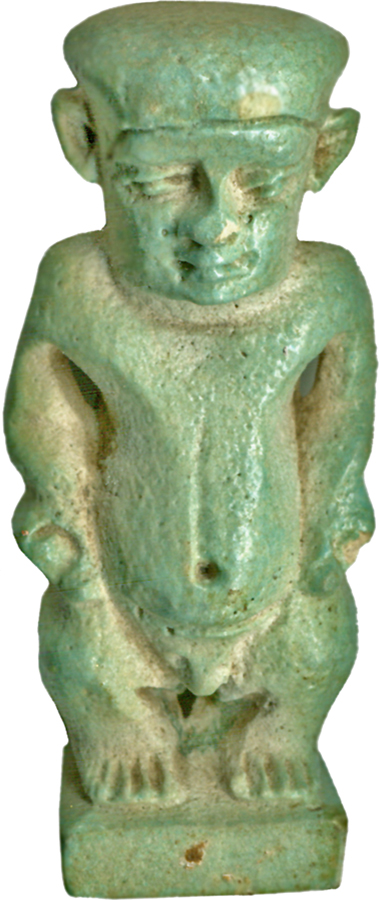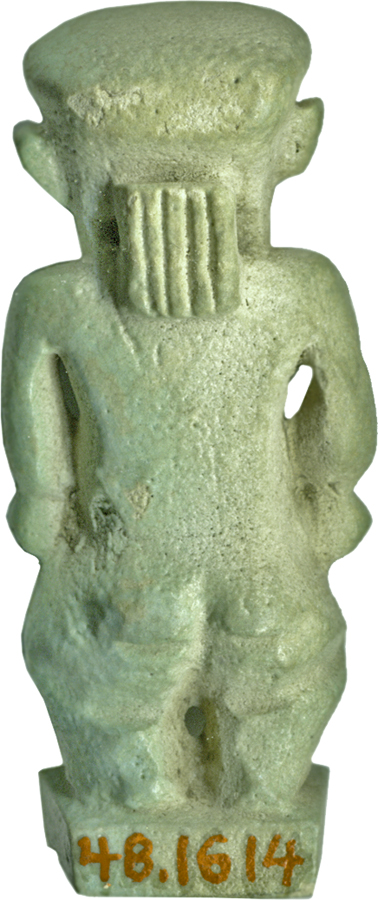Standing Pataikos
(Ancient Egypt and Nubia )
This dwarf-like, protective deity was very popular in ancient Egypt; amulets in the shape of this god were particularly popular from the Third Intermediate period. The Greek name Pataikos comes from a passage in the writings of Herodotus (ca. 5th century BCE), who used this term to describe a Phoenician protective dwarf-like image. The Egyptian Pataikos is a special manifestation of the creator god Ptah and the dwarf-like appearance symbolizes his magical power.
This amulet presents the standard type of Pataikos as a standing nude dwarf, with his clenched hands at his sides, and a large dominating head.
Provenance
Provenance (from the French provenir, 'to come from/forth') is the chronology of the ownership, custody, or location of a historical object. Learn more about provenance at the Walters.
Maurice Nahman, Cairo; Henry Walters, Baltimore, 1930, by purchase; Walters Art Museum, 1931, by bequest.
Exhibitions
| 2006-2007 | Daily Magic in Ancient Egypt. The Walters Art Museum, Baltimore. |
Geographies
Egypt (Place of Origin)
Measurements
H: 1 3/4 x W: 5/8 x D: 7/16 in. (4.4 x 1.6 x 1.15 cm)
Credit Line
Acquired by Henry Walters, 1930
Location in Museum
Not on view
Accession Number
In libraries, galleries, museums, and archives, an accession number is a unique identifier assigned to each object in the collection.
In libraries, galleries, museums, and archives, an accession number is a unique identifier assigned to each object in the collection.
48.1614










